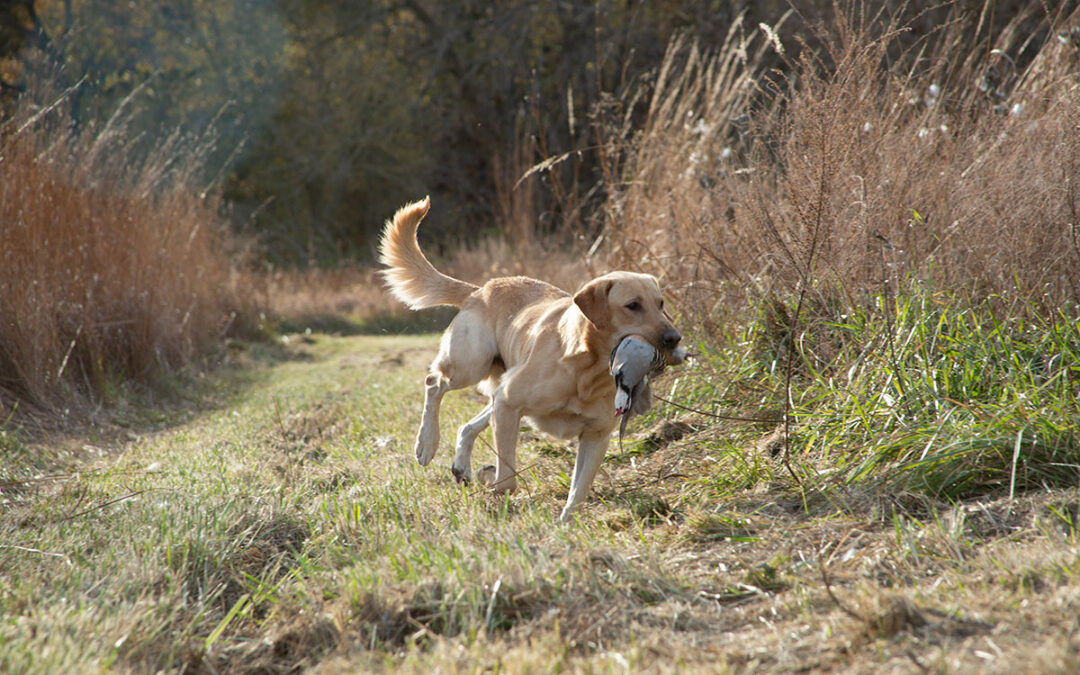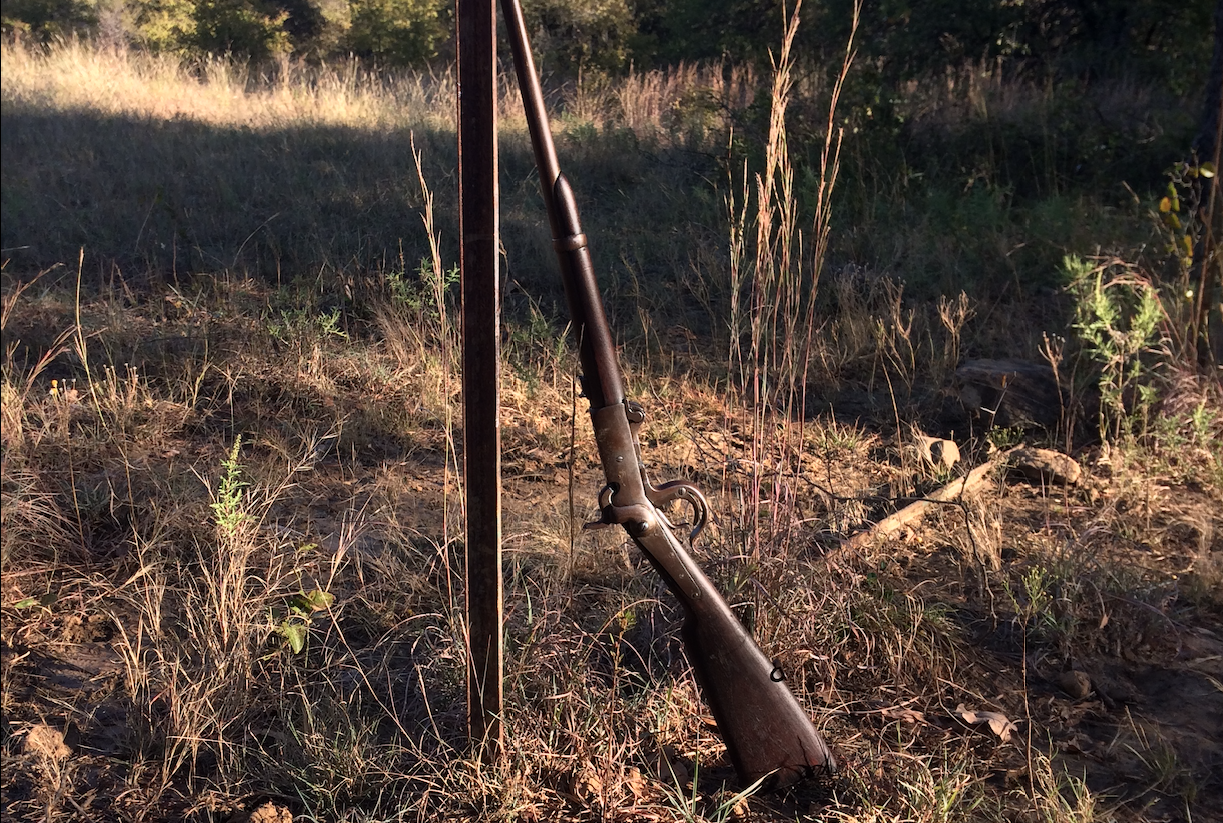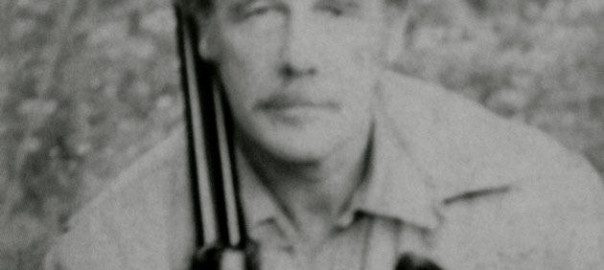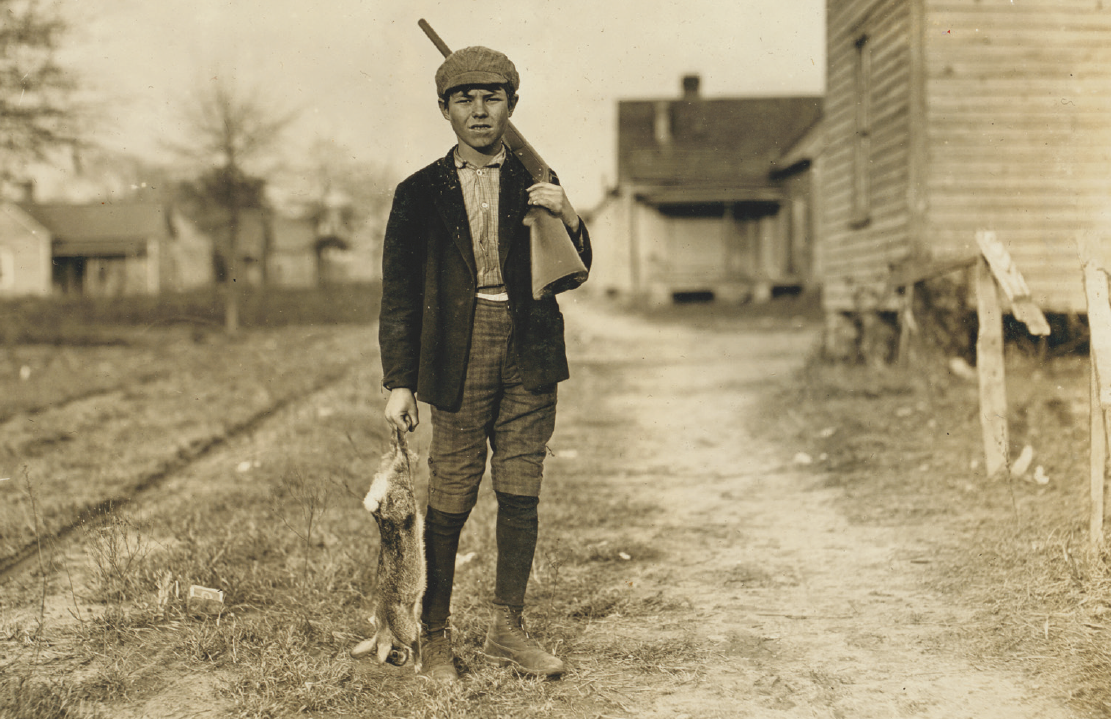John M. Taylor talks bird hunting in the quiet little town, and best kept secret, of Shawntee, Illinois. This is NILO Land.
Think of Illinois and Chicago comes to mind, but the real history of the state lies 300-odd miles to the south. At the confluence of the Wabash and Ohio Rivers lies nearly forgotten Shawneetown, Illinois, but it was there in November of 1803 that Lewis and Clark paused before heading south to Fort Massac and eventually into the unknown West. My ancestor, John Marshall, had the first bank in the state of Illinois in Shawneetown, and it was he and his fellow merchants who denied a group, who had ridden 300-plus miles on horseback from Chicago, a loan of $1,500 because, “Chicago was too far from Shawneetown ever to amount to anything.” And the little town, then a major Ohio River port, hosted General Marquis de Lafayette when he made a tour of America in 1825.
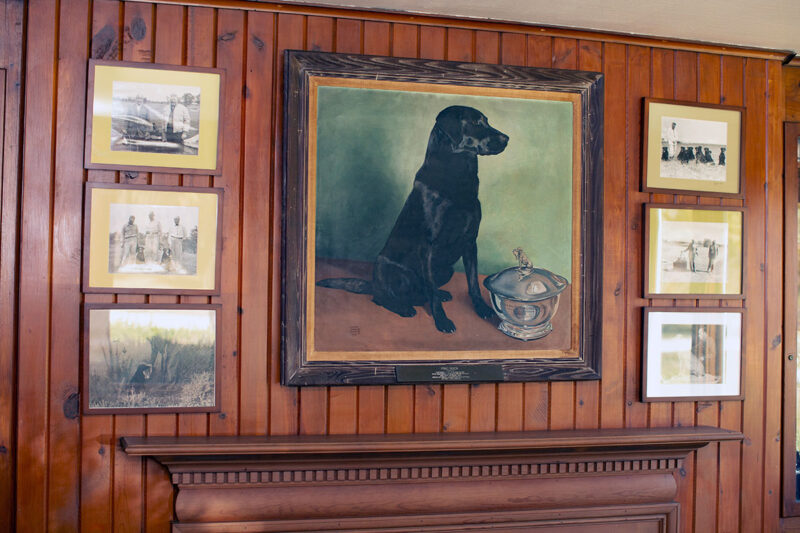 Go west across the state and opposite St. Louis, close by the banks of the Mississippi, are the Cahokia Mounds where, 1,000 years before Europeans set foot on North America, these Pre-Columbian Native Americans─called Mississippians─lived and built mounds. Just above this largest archaeologic site north of Mexico lies NILO Farms, a veritable feast for the hunter and shooter.
Go west across the state and opposite St. Louis, close by the banks of the Mississippi, are the Cahokia Mounds where, 1,000 years before Europeans set foot on North America, these Pre-Columbian Native Americans─called Mississippians─lived and built mounds. Just above this largest archaeologic site north of Mexico lies NILO Farms, a veritable feast for the hunter and shooter.
Bought by John Olin in 1950 to serve as a place for his pursuit of excellent dog training, it also served as a testing ground for Western-Winchester ammunition. Perhaps the best known was the early work with steel shot by Winchester ballistician Ed Lowery and others.
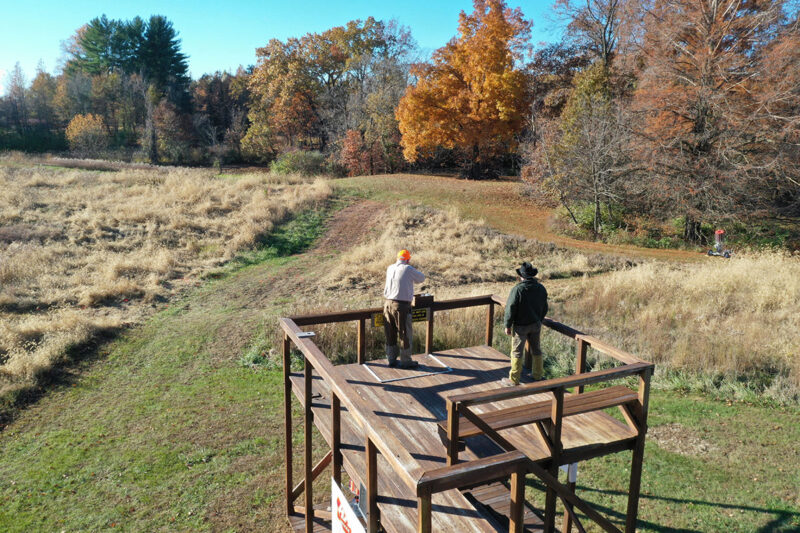 In the late 1940s, the then-Illinois Department of Conservation biologist Frank Bellrose began work on the toxic effects of lead shot picked up by waterfowl from lakes and streams when they picked up grit to grind food in their crops. Ducks in concentrations around the Illinois River and elsewhere showed signs of lead poisoning with increased mortality and decreased hatches of healthy chicks. By the 1970s the search for nontoxic shot was in full bloom, and the folks at NILO will happily point out to visitors the bluff where tethered mallards were “flown” down a wire and an electrically triggered shotgun was fired at the moment the duck was centered in the pattern. Steel shot shells have come a long way since those pioneering tests, but they paved the way toward understanding the strengths and weaknesses of steel as a pellet material.
In the late 1940s, the then-Illinois Department of Conservation biologist Frank Bellrose began work on the toxic effects of lead shot picked up by waterfowl from lakes and streams when they picked up grit to grind food in their crops. Ducks in concentrations around the Illinois River and elsewhere showed signs of lead poisoning with increased mortality and decreased hatches of healthy chicks. By the 1970s the search for nontoxic shot was in full bloom, and the folks at NILO will happily point out to visitors the bluff where tethered mallards were “flown” down a wire and an electrically triggered shotgun was fired at the moment the duck was centered in the pattern. Steel shot shells have come a long way since those pioneering tests, but they paved the way toward understanding the strengths and weaknesses of steel as a pellet material.
Morning at NILO can include a warmup at its 5-Stand sporting setup. One word of warning, it is set up on the brow of a rise and the targets are made optically difficult by the need to hold well under the birds as they fly down the slope. Once warmed up by hitting the majority of 5-stand targets (Ha, ha!) it’s off to the fields for pheasants and chukar partridge; really Spanish red-legged partridge that you shoot as driven birds in Spain.
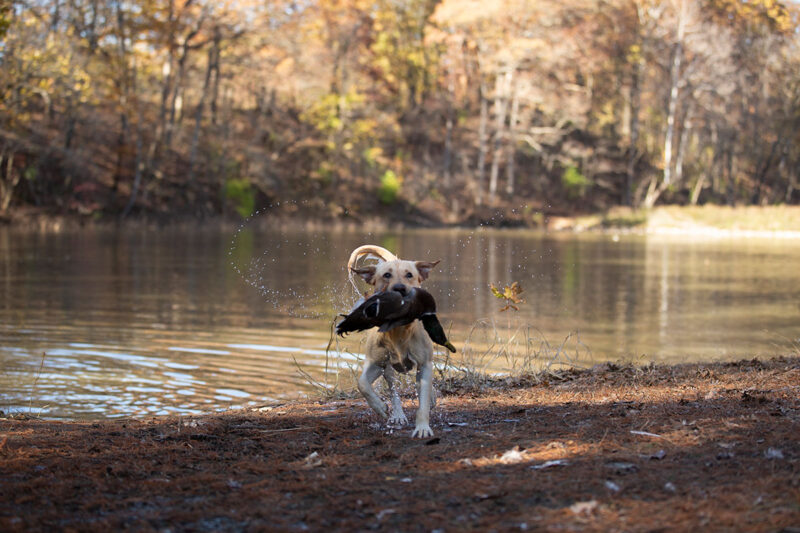 Here the quality of NILO’s dogs and their training shines. At any one time the NILO ─ that’s Olin spelled backward ─ kennels can have as many as 100 dogs being trained and worked in their game fields. For new dogs, they stay in a quarantine kennel for a few days as a precaution against spreading disease to the larger kennel. The head trainer lives adjacent to the kennels in the house built for Cotton Pershall as part of his agreement when John Olin hired him. Pershall─America’s top dog trainer of the day─was wooed away from his employer when Olin acceded his salary and other demands. Pershall trained King Buck, Olin’s prized retriever who is immortalized by a cast-iron statue standing over his tomb in front of the NILO kennels. King Buck is the only dog to ever appear on the Federal Migratory Bird (Duck) Stamp.
Here the quality of NILO’s dogs and their training shines. At any one time the NILO ─ that’s Olin spelled backward ─ kennels can have as many as 100 dogs being trained and worked in their game fields. For new dogs, they stay in a quarantine kennel for a few days as a precaution against spreading disease to the larger kennel. The head trainer lives adjacent to the kennels in the house built for Cotton Pershall as part of his agreement when John Olin hired him. Pershall─America’s top dog trainer of the day─was wooed away from his employer when Olin acceded his salary and other demands. Pershall trained King Buck, Olin’s prized retriever who is immortalized by a cast-iron statue standing over his tomb in front of the NILO kennels. King Buck is the only dog to ever appear on the Federal Migratory Bird (Duck) Stamp.
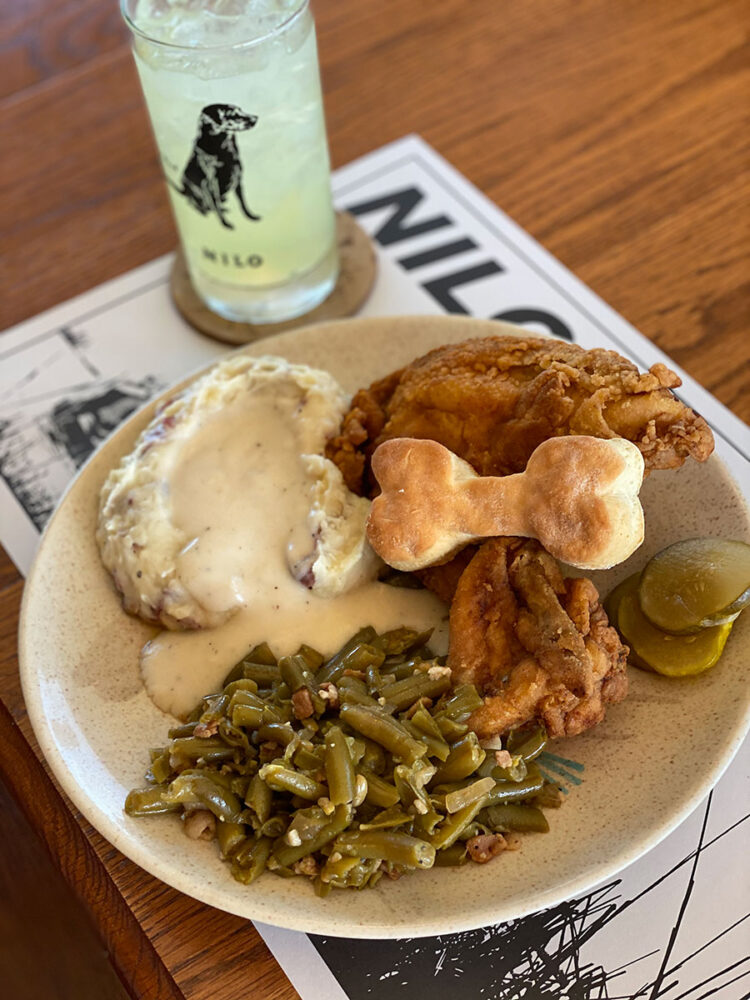 One of the frequent visitors to NILO was the late Nash Buckingham who was one of the most influential outdoor writers of the first two-thirds of the 20th century. Olin sensed the need for hunters to begin giving back to the resource we so love, and in the 1930s hired Buckingham as his Director of Conservation. In Buckingham’s many stories he writes often about the meals served at his duck clubs in Arkansas and Mississippi. He would be pleased at the provender offered at lunch at NILO; fried chicken fit for a Colonel, real mashed potatoes, fluffy biscuits, homemade pickles, jams, honey and desserts that would do a French chef proud to tamp it all down. Then to the “duck shoot.”
One of the frequent visitors to NILO was the late Nash Buckingham who was one of the most influential outdoor writers of the first two-thirds of the 20th century. Olin sensed the need for hunters to begin giving back to the resource we so love, and in the 1930s hired Buckingham as his Director of Conservation. In Buckingham’s many stories he writes often about the meals served at his duck clubs in Arkansas and Mississippi. He would be pleased at the provender offered at lunch at NILO; fried chicken fit for a Colonel, real mashed potatoes, fluffy biscuits, homemade pickles, jams, honey and desserts that would do a French chef proud to tamp it all down. Then to the “duck shoot.”
Now, this isn’t a waders-and-callin’ duck outing. It’s fast-action shooting at mallards that give you a window of a mere second or two in which to drop the hammer. Screened by trees, the ducks come zipping by, afterburners ablaze, on their way from their pen on the bluff to the pond below. When they tire of paddling on the pond, they waddle back up the hill on a path worn by decades of their forebearers.
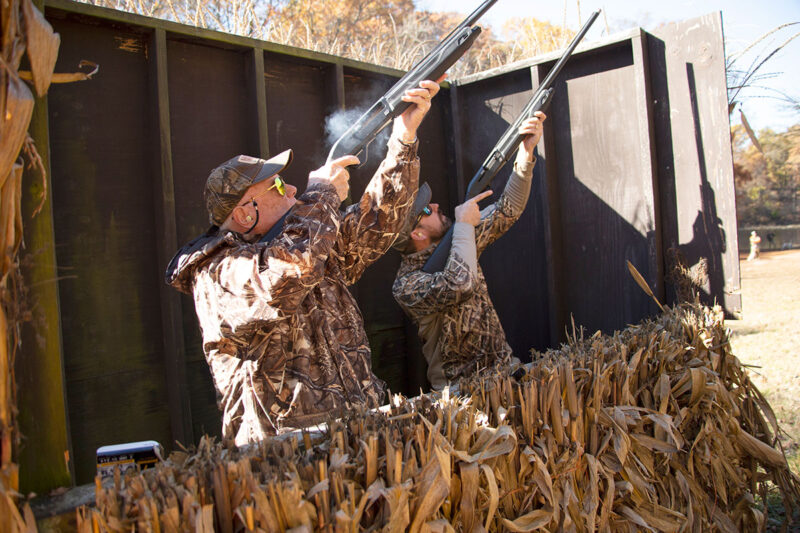 One part of my job as a writer is sharing blinds and fields with wonderful people, and my visit to NILO was no exception. In the summer 2021, our athletes will (hopefully) travel to Japan for the Olympic Games where Madelynn “Maddy” Bernau will represent us on the Women’s Trap Team. A delightful young lady recently graduated from college, she can talk guns with the best of them and uses them better than us poor mortals. She is never overbearing, as can often affect people with her talents. We laughed at our misses and enjoyed our hits making for a great time on a warming southern Illinois afternoon.
One part of my job as a writer is sharing blinds and fields with wonderful people, and my visit to NILO was no exception. In the summer 2021, our athletes will (hopefully) travel to Japan for the Olympic Games where Madelynn “Maddy” Bernau will represent us on the Women’s Trap Team. A delightful young lady recently graduated from college, she can talk guns with the best of them and uses them better than us poor mortals. She is never overbearing, as can often affect people with her talents. We laughed at our misses and enjoyed our hits making for a great time on a warming southern Illinois afternoon.
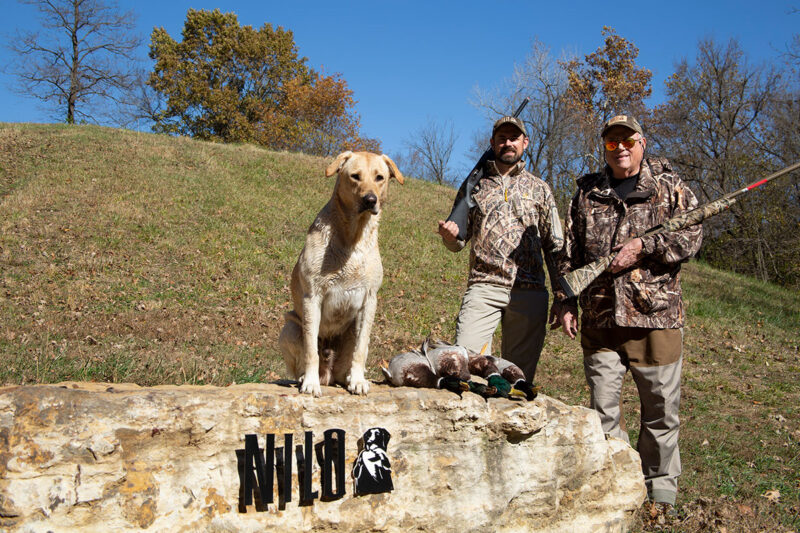 Once the private playground of John Olin and his friends, NILO is now open to the public for sporting clays ─ they have a challenging 12-station course ─ skeet, trap 5-Stand and excellent bird hunting over great dogs. Because of the spacious 640-acre layout, hunts can be tailored to about anyone, including those with physical challenges.
Once the private playground of John Olin and his friends, NILO is now open to the public for sporting clays ─ they have a challenging 12-station course ─ skeet, trap 5-Stand and excellent bird hunting over great dogs. Because of the spacious 640-acre layout, hunts can be tailored to about anyone, including those with physical challenges.
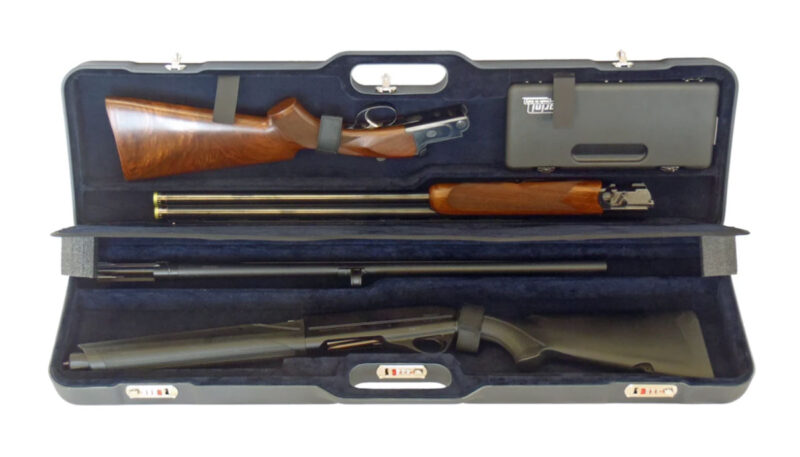 There is nothing like the Negrini 1677LR-UNI/5044 UNICASE Double Shotgun Case. Travel to your next hunting/shooting destination with your SXS, O/U and/or Semi-auto and Pump shotguns. The double shotgun case easily converts and adapts for any type of shotgun. Just Remove the accessory box to convert the case from an O/U to an Autoloader shotgun case. With hardened steel locks and hinges that are recessed to prevent damage from airport conveyor belts. Featuring separate compartments for stock and receiver, barrel and fore end as well as removable accessories boxes. All materials used are certified to not gas out or corrode firearms. Includes ICC Limited lifetime warranty. Buy Now
There is nothing like the Negrini 1677LR-UNI/5044 UNICASE Double Shotgun Case. Travel to your next hunting/shooting destination with your SXS, O/U and/or Semi-auto and Pump shotguns. The double shotgun case easily converts and adapts for any type of shotgun. Just Remove the accessory box to convert the case from an O/U to an Autoloader shotgun case. With hardened steel locks and hinges that are recessed to prevent damage from airport conveyor belts. Featuring separate compartments for stock and receiver, barrel and fore end as well as removable accessories boxes. All materials used are certified to not gas out or corrode firearms. Includes ICC Limited lifetime warranty. Buy Now
